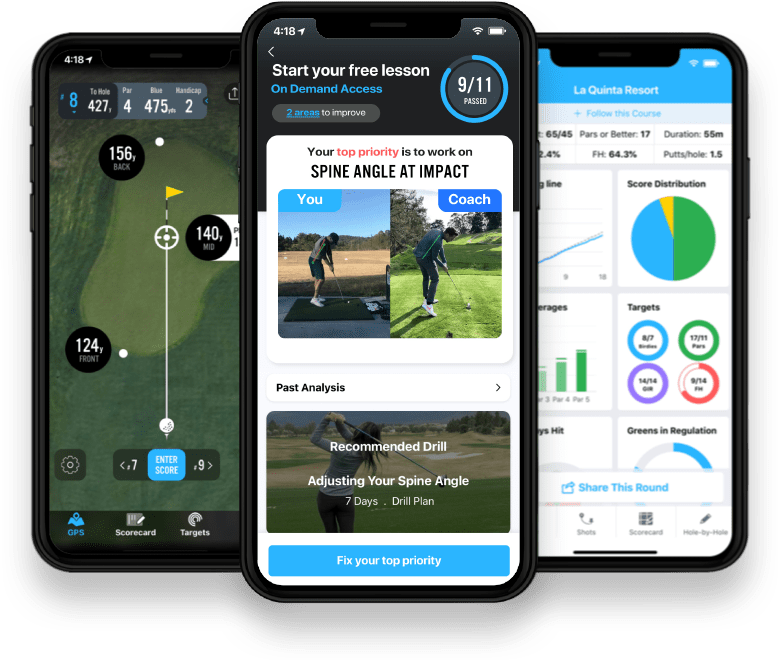Once upon a time it took specialized instruction and hours of practice to master the art of flying a radio-control (RC) helicopter – the only practical means available of obtaining hovering flight in a small, unmanned aerial vehicle; nowadays the RC chopper has been replaced by sophisticated computer-controlled, GPS-enabled, camera-carrying drones that practically fly themselves. The advent of these near-autonomous flying gadgets has brought a wealth of previously unheard-of applications, including many ways that they can be utilized in the golf industry. So just how will drones be used on the golf course?
Broadcast coverage
Television coverage of golf tournaments is one of the frontiers for drones in golf that is being explored. NBC put drone coverage to use for the first time in November 2015 at Bay Hill, and Fox Sports started working with drones last year as the network began its run as the USGA’s broadcast partner for its championship tournaments, beginning with the inaugural Amateur Four-Ball Championship at San Francisco’s Olympic Club, in May 2015.Given the “hush-hush” nature of the game of golf, the use of drones – with their four to eight buzzing electric-motor-driven propellers – is not likely to feature in broadcast coverage of actual play. However, drones are an efficient and cost-effective way of obtaining auxiliary video imagery – beauty shots – of the course and its environs, flyovers to set up play as a featured group comes to that hole, etc.

During Play
With pace-of-play becoming a hot-button issue in the golf industry, monitoring player positions on the course during the day’s play is another potential application for drones. Providing aerial imagery obtained by drones on mobile devices via a course app or on in-cart screens can also help players understand how best to play a hole – a big factor in improving pace of play.Drones are also being looked at to replace the ubiquitous beverage cart. The Japanese firm Rakuten is developing drones as delivery vehicles, and not just for your latest package from Amazon.com; they are looking into providing the service to golfers on the course, enabling golfers to summon a drone via the company’s Android app, delivering golf balls, snacks, or food up to a maximum weight of 2 kg, with a minimum value of 100 yen ($0.90).
Drones are even being used to play golf – drone golf, that is, using drones equipped with a special arm that holds a golf ball. It’s basically a flying closest-to-the-hole contest in which contestants hover the drone over the green, eyeball their position, and drop the ball. The player whose ball ends up closest to the flag is the winner.
Golf Instruction
All sorts of high-tech systems are being used in golf instruction these days, from high-speed video, to sophisticated motion tracking devices, and now drones are joining the fray. Out on the practice tee and need to see a student’s swing from a different point of view? A hovering drone can eyeball a golfer from above, recording high-speed video imagery that captures a perspective of the golf swing that hasn’t been available before.Marketing
The first, and probably the most widespread use of drones in the golf industry has been in marketing. Aerial photos and video tours of a course are powerful marketing tools that are being used by more golf courses all the time, but before drones came along, producing these images meant hiring a helicopter – which meant a pilot and a camera operator – for thousands of dollars per day; and that’s before editing and the other post-production work that’s required to produce a finished video.In addition to pre-visit marketing use, flyover photos and videos can be added to the in-cart screen systems that provide GPS information – especially useful for resort courses that a player might visit and play only once, or infrequently.

Course Management
An 18-hole golf course typically encompasses a good-sized parcel of land – typically anywhere from 110 to 200 acres. That’s a lot of land to keep track of, with a variety of surfaces to monitor: tee boxes, greens, fairways, rough and native areas; not to mention outbuildings and cart paths.Aerial coverage from a drone can ease the course superintendent’s task when it comes to monitoring turf health, with near-infrared imaging, allowing a quick overview of acres of land for water usage, the turf health, etc. GPS-enabled drones can effectively map a golf course, generating KMZ (Keyhole Markup language Zipped) files that allow overlays to be assembled on top of Google Earth images of the course and enabling easy examination of changes in the course environment over time.
 Try for Free
Try for Free
